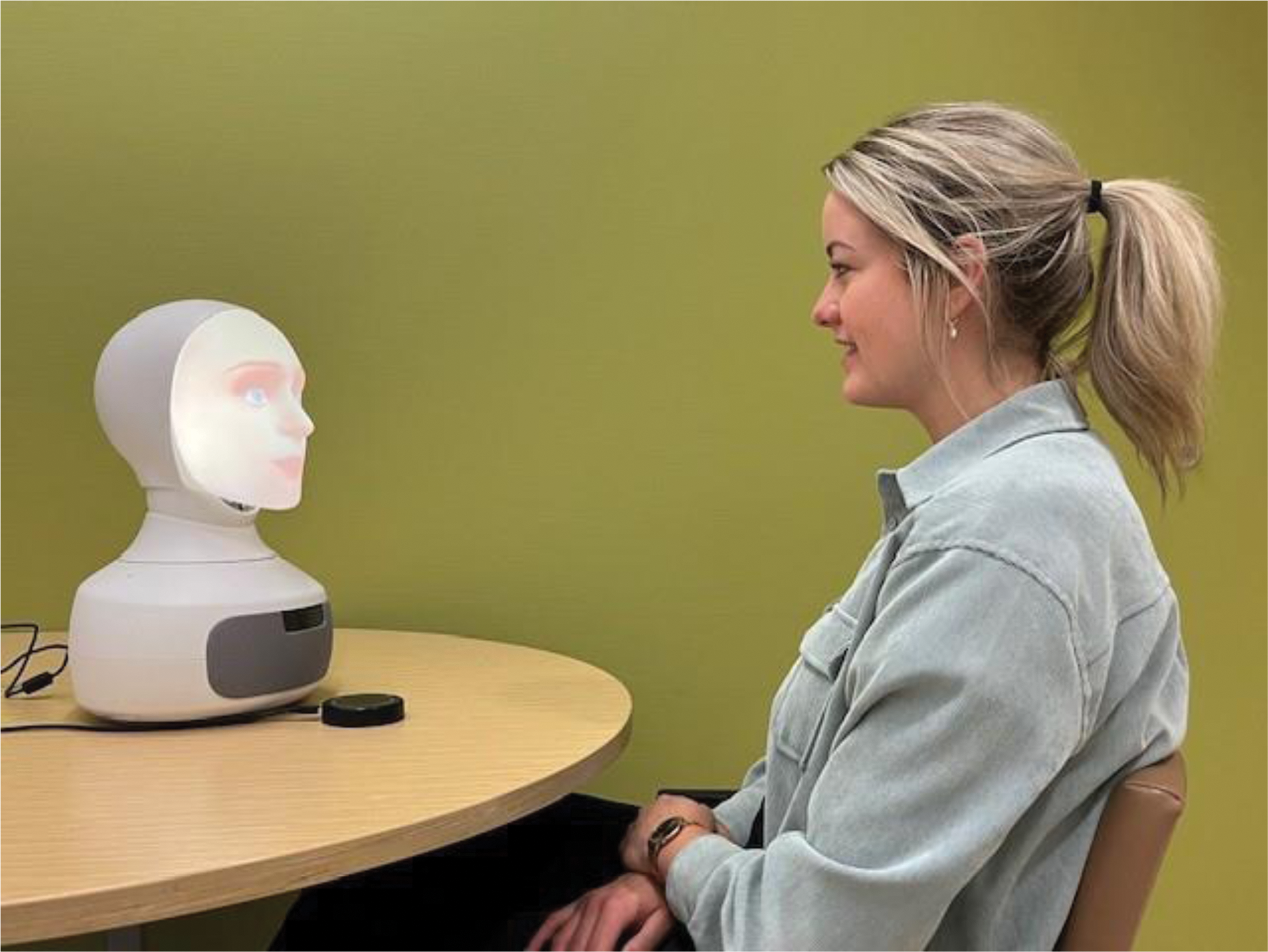

Background: Effective patient communication is a cornerstone of quality healthcare. However, increasing demands on healthcare professionals (HCPs) cause a need for innovative solutions that enhance the accessibility and delivery of information to patients. Social robots are emerging as promising tools in this space, offering the ability to interact naturally with humans and assist with communication tasks. By integrating Artificial Intelligence (AI), these robots can further adapt to individual needs, providing personalized and dynamic support. This study explores the potential of an AI-reinforced social robot, to serve as an information tool for rheumatology patients. Through natural language processing and machine learning, the robot aims to address common patient questions, deliver accurate medical information, and enhance health literacy.
Objectives: The aim of this research is to assess the feasibility of integrating AI-reinforced social robots into clinical practice, to support communication and information exchange for patients with rheumatic diseases.
Methods: The social robot was programmed with generative AI capabilities to simulate natural, conversational interactions tailored to rheumatic patient education. The robot utilized preselected evidence-based content to provide patients with information about their condition and treatment options, ensuring clinical relevance and accuracy. Patients with new or established rheumatoid arthritis (RA), systemic lupus erythematosus (SLE) or osteoarthritis (OA) and rheumatology healthcare professionals (HCPs) were invited to participate in the study. The sessions were designed to simulate real-world clinical encounters to evaluate the robot’s impact on communication dynamics. After interacting with the robot, participants completed the User Experience Questionnaire (UEQ) to assess the robot’s usability and functionality. Semi-structured interviews with patients and HCPs explored subjective experiences, focusing on acceptability, perceived usefulness, and its influence on clinician-patient interactions. Quantitative data were analyzed descriptively, with mean UEQ scores interpreted to identify positive or negative trends in user experience. For the interviews, a deductive thematic analysis was conducted using pre-defined coding schemes. These coding schemes were developed based on a review of relevant literature and aligned within the study’s objectives, ensuring they captured key aspects of communication, usability, and interaction dynamics. Codes were categorized into primary themes, with sub-codes indicating aspects of the main codes. Cross-comparisons between patient and HCP perspectives highlighted alignment and discrepancies in their experiences with the robot.
Results: Patient UEQ score was mean 2.13 with values ranging from 1.7 to 2.5, indicating a positive trend in efficiency, inventiveness and acceptability. HCPs UEQ scores was mean 1.89 with all values above 1 except for item 5 (excitement of usage), which scored 0.8 (SD 1.3). In interviews, patients generally found the Social Robot both acceptable and useful in a clinical setting and appreciated the robot’s ability to provide information and respond to their questions, but suggested that the robot’s communication style might need to be adjusted for different educational levels. HCPs generally also viewed the robot as both acceptable and useful, particularly in areas such as patient education, triage, and routine follow-up, but expressed concerns about the robot’s ability to replace human interaction, particularly in contexts where empathy and personalized care are crucial. Patients and HCPs generally found the information provided by the robot to be accurate and relevant.
Conclusion: Both patients with rheumatic diseases and HCPs see the AI-reinforced Social Robot as a potentially valuable tool in a Rheumatology outpatient clinical setting, particularly for providing information and supporting patient education. However, both groups also highlighted the importance of maintaining human interaction and emphasized that the robot should complement, rather than replace, the role of healthcare professionals. While the robot’s information was generally viewed as accurate and relevant, there were concerns about its complexity and the need for human oversight.
Setup for AI-reinforced Social Robot interaction with patient

REFERENCES: NIL.
Acknowledgements: BMS faculty innovation lab, University of Twente Enschede, the Netherlands.
Disclosure of Interests: None declared.
© The Authors 2025. This abstract is an open access article published in Annals of Rheumatic Diseases under the CC BY-NC-ND license (